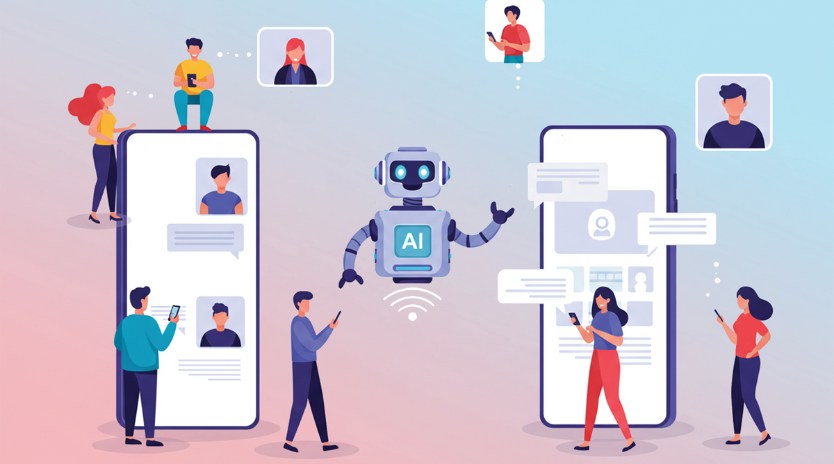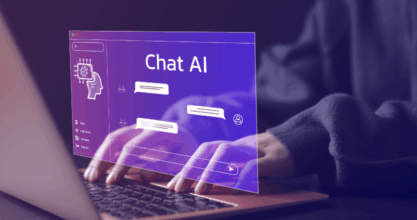From SEO to GEO: Navigating the New Search Landscape

Search behavior is evolving. While AI chatbots currently account for just 2.96% of search engine traffic, their growing influence signals a major shift, not a disappearance of traditional SEO for private school and businesses, but an expansion of what search means. Tools like ChatGPT, Perplexity, and Google’s Gemini are gaining traction for specific tasks and questions, yet most users still turn to Google for the majority of their everyday searches. This transition marks a turning point in how businesses must approach visibility online. Keep reading to learn more.
Finding answers through AI overview
Today’s users don’t search the same way they did a few years ago. Recent studies show that 82% of users scan search results for less than 10 seconds before deciding what to click. More significantly, a growing number of users aren’t clicking at all. AI-generated overviews (yes, those you see in search engines that summarize answers at the top of the page) are changing how people engage with content. Around 45% of users now accept the AI-generated response as their final answer, without exploring further. Another 30% only review the sources cited in the overview, briefly checking for credibility.
This new behavior has real consequences for businesses. Click-through rates (CTR) have dropped by 25–30% across many industries. In some cases, the drop in organic traffic has reached 40%. What’s more, as AI summaries become more sophisticated, their influence is expected to grow. By the end of 2025, it’s estimated that 70% of search interactions will be shaped by AI-generated overviews. For marketers and content creators, this means rethinking what it means to “rank” online. Visibility isn’t just about showing up in a list of links anymore; it’s about becoming part of the answer.
Generative engine optimization (GEO) and the beginning of a new search landscape
As mentioned before, AI search engines are changing how people find and engage with information and brands. Unlike traditional search engines, these tools don’t rely on a list of results. They generate responses instantly, combining information from multiple sources to create one clear answer. This shift means fewer users are clicking through to websites, and more are staying within the AI interface. To stay visible, businesses need to ensure their content is being used by these systems. That’s where Generative Engine Optimization, or GEO, comes in.
GEO is the practice of optimizing your content to appear in AI-generated responses. It works alongside SEO for private schools, brands, and businesses, but serves a different function. Instead of competing for a top spot on Google’s results page, GEO helps a brand get mentioned or cited by AI systems even if no one clicks a link. In short terms, GEO is becoming essential for maintaining visibility. Brands that aren’t optimized for AI search risk becoming invisible to a growing share of users.
How is GEO different from SEO?
While SEO and GEO share the goal of increasing visibility, they do so in very different ways. Search Engine Optimization (SEO) is designed for traditional search engines. It focuses on optimizing keywords, meta descriptions, backlinks, and technical performance to rank web pages higher on results pages. The goal is to increase organic traffic and clicks through a list of links. GEO, on the other hand, is optimized for AI-powered systems that generate answers directly. These systems don’t necessarily present clickable results, instead, they summarize or synthesize content from multiple sources. Here are some key differences:
- SEO aims to increase web traffic through rankings.
- GEO aims to get a brand or business mentioned in AI-generated responses.
- SEO relies on keyword research and technical audits.
- GEO focuses on content clarity, structure, and contextual relevance to AI algorithms.
- SEO is about being discoverable in a list of search results.
- GEO is about being part of the answer, even if no links are clicked.
To succeed in the evolving search landscape, businesses must optimize for both. That means continuing to maintain strong SEO practices while also learning how AI systems evaluate and select content. This includes understanding how LLMs (large language models) synthesize data and ensuring your content is easy for AI to process and present.
Rather than a decline in SEO for private schools, businesses and brands, we’re witnessing the rise of a more complex ecosystem, one where traditional search and AI-powered platforms coexist. By embracing both SEO and GEO, businesses can stay visible across traditional and emerging platforms, to meet users where they are, adapt to shifting search behaviors, and build lasting visibility in a rapidly evolving digital landscape.


